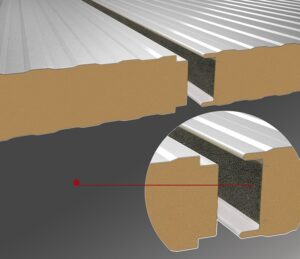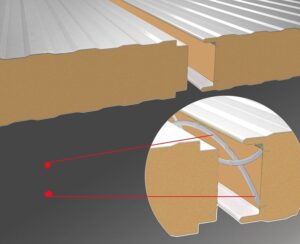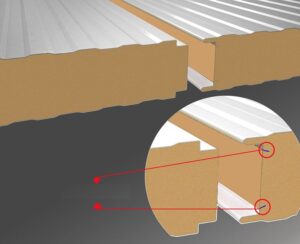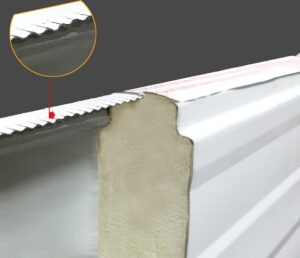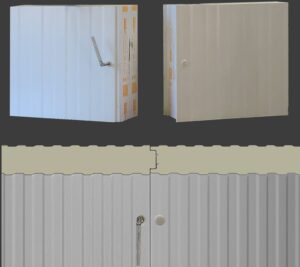
Sizes
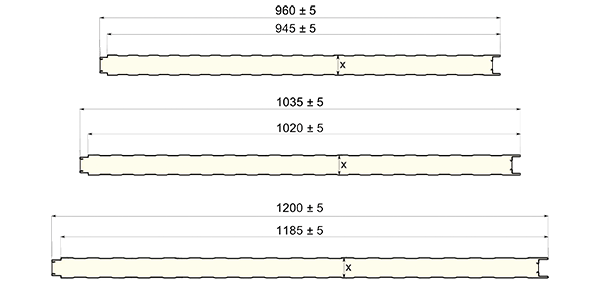
| insulation thickness (mm) | 70,80,90,100,120,150 |
| effective width (mm) | 945 , 1020 , 1185 |
| maximum length | At desired lengths and depending on shipping conditions |
Insulation layer

| density | 40±2kg/m³ |
| Heat transfer coefficient | W/(m.K) 0/0159~0/0260 |
| type of foam | PUR (B2) , PIR |
Top and bottom layers
| top and bottom sheet | Pre-painted galvanized / Pre-painted aluzinc / Pre-painted aluminum/steel |
| thickness | 0.3 to 0.7 mm |
| forming type | Cold rolling (fine shutters, coarse shutters, smooth) |

Connecting together


Performance and efficiency of a refrigerator
Obviously, the efficiency and effectiveness of a refrigerator depends on the insulation of the environment inside it and the reduction of heat exchange between the environment inside and outside as much as possible. The following changes play an important role in this insulation.
1- The way sandwich panels connect to each other at the location of the plug and tabs
2- Insulation quality of sandwich panels and its heat transfer coefficient
3-The way sandwich panels connect to the floor
4- The quality of the doors and how to connect the doors to the panels
One of the challenges of refrigerators, whether during installation or operation, is the proper connection and air locks of the sandwich panels to each other. Although the skill of installation and precision in installation is also effective in this issue, but the plugs and tabs should be produced in a standard and principled manner in terms of geometric shape design and accuracy in dimensions and no distortion and contact surface coating material. The best way to improve the airlock quality of refrigerators is to reduce the number of joints between the sandwich panels. For the first time in Iran, Arya Baron succeeded in producing wide cold sandwich panels with a width of 120 cm. When the walls and ceiling of a cold storage are covered with 120 cm wide sandwich panels, the number of joints is reduced by 20% compared to the traditional 1 m wide sandwich panels. In other words, the challenge of keeping the refrigerator cool airlock is reduced by 20% without any changes just by using a wider panel.
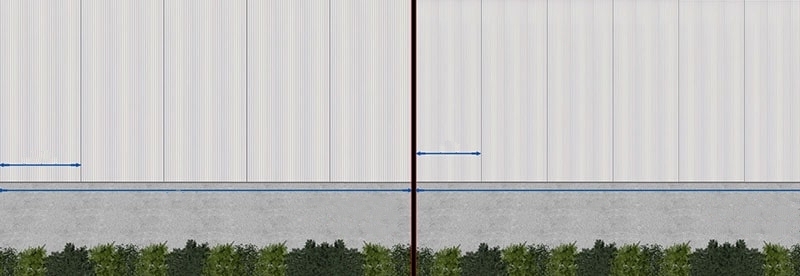
Another advantage of 1.2-meter wide sandwich panels is the optimal use of space for trucks and trailers, resulting in a 40% reduction in transportation costs.
The loadable width of the floor of a trailer is 2.5 meters, and when two rows of 1.2-meter wide sandwich panels are loaded next to each other, 2.4 meters of width is used. If two rows of traditional sandwich panels with a width of 1 meter occupy a width of 2 meters and the space volume will be 40 cm wide by 12 m long and 2.5 m high.



